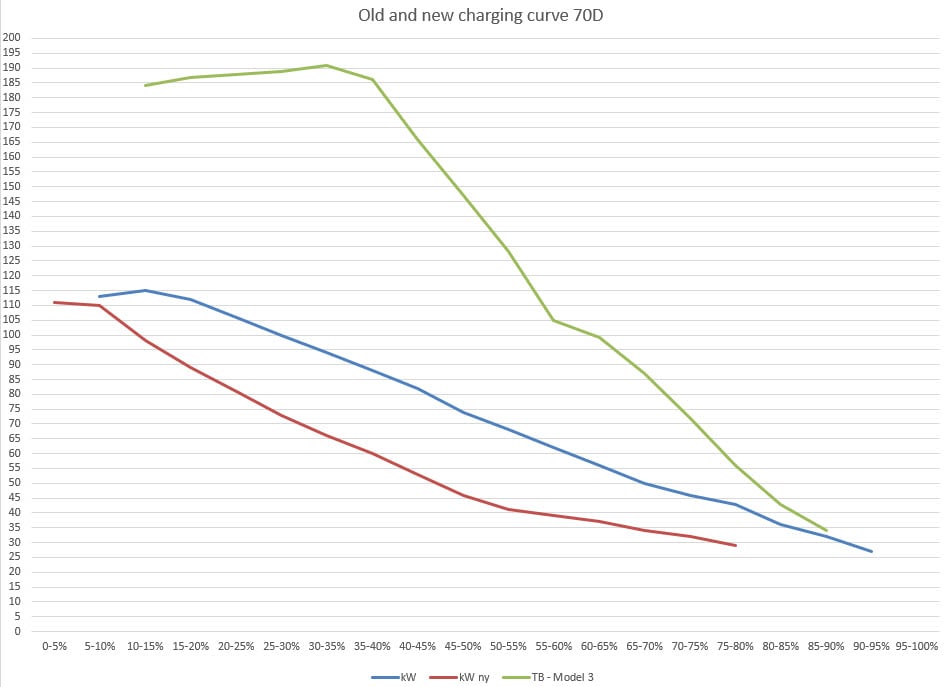I have one of the last 85Ds before it was phased out. Mine was built in February of 2016. I only lost a mile or two in the last month or two, since the update, but I have not done a range charge in a while. Most days I only charge to 50% because that is all I need and I have only done about 4 range charges in the life of the car, which has just over 61,000 miles.
I took a recent trip and charged to 90%. All seemed normal, minus a mile or so on the charge. What I did notice was at the one supercharger stop, the taper seemed to happen much faster. I got in with about a 15% SOC and only saw 114kWs for a minute or so. By the time the car hit 30%, it was down to 85kWs. I was not paired with anyone. I used to see full power till about 40% and then a lot more gradual decline. It took about 25 minutes to charge from 15% to 50%, and the cooling system ran, but not at full throttle (I have had supercharging sessions where the car sounded like a plane doing a runup).
My point in all of this is that the DC charge line in the German letter seems to be the culprit, and they have throttled the charging speeds. I wonder if the people who saw the biggest range drop did a lot of supercharging.



